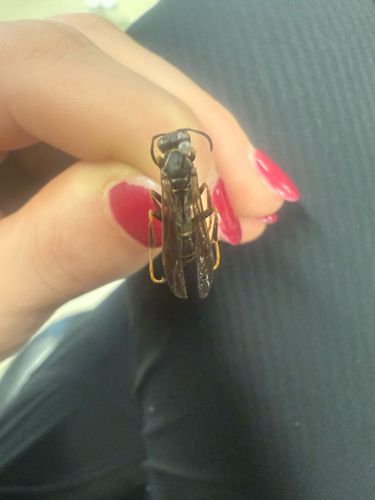Horntail Wasp
Scientific Name: Urocerus gigas
Order & Family: Hymenoptera, Siricidae
Size: 20-40 mm (females are generally larger than males)

Natural Habitat
Forests, particularly coniferous forests where their host trees grow. They are often found near recently fallen or dying trees.
Diet & Feeding
Larvae feed on the wood of coniferous trees (e.g., pine, spruce, fir). Adults do not feed or feed very little, primarily on sap or nectar.
Behavior Patterns
Female horntail wasps lay their eggs in the wood of trees, often in sick, dying, or recently felled conifers. They use a strong, needle-like ovipositor to drill into the wood. The larvae tunnel through the wood for up to three years before pupating. Adults are short-lived and are often seen flying near suitable host trees during their emergence season.
Risks & Benefits
Horntail wasps are not dangerous to humans; they do not sting in defense, and the female's 'horn' (ovipositor) is used for egg-laying, not stinging. While they can be a pest in forestry by damaging timber, they generally only infest trees already stressed or dead, acting as decomposers in the ecosystem. They are a natural part of forest ecosystems and provide food for some insectivorous animals.
Identified on: 11/19/2025